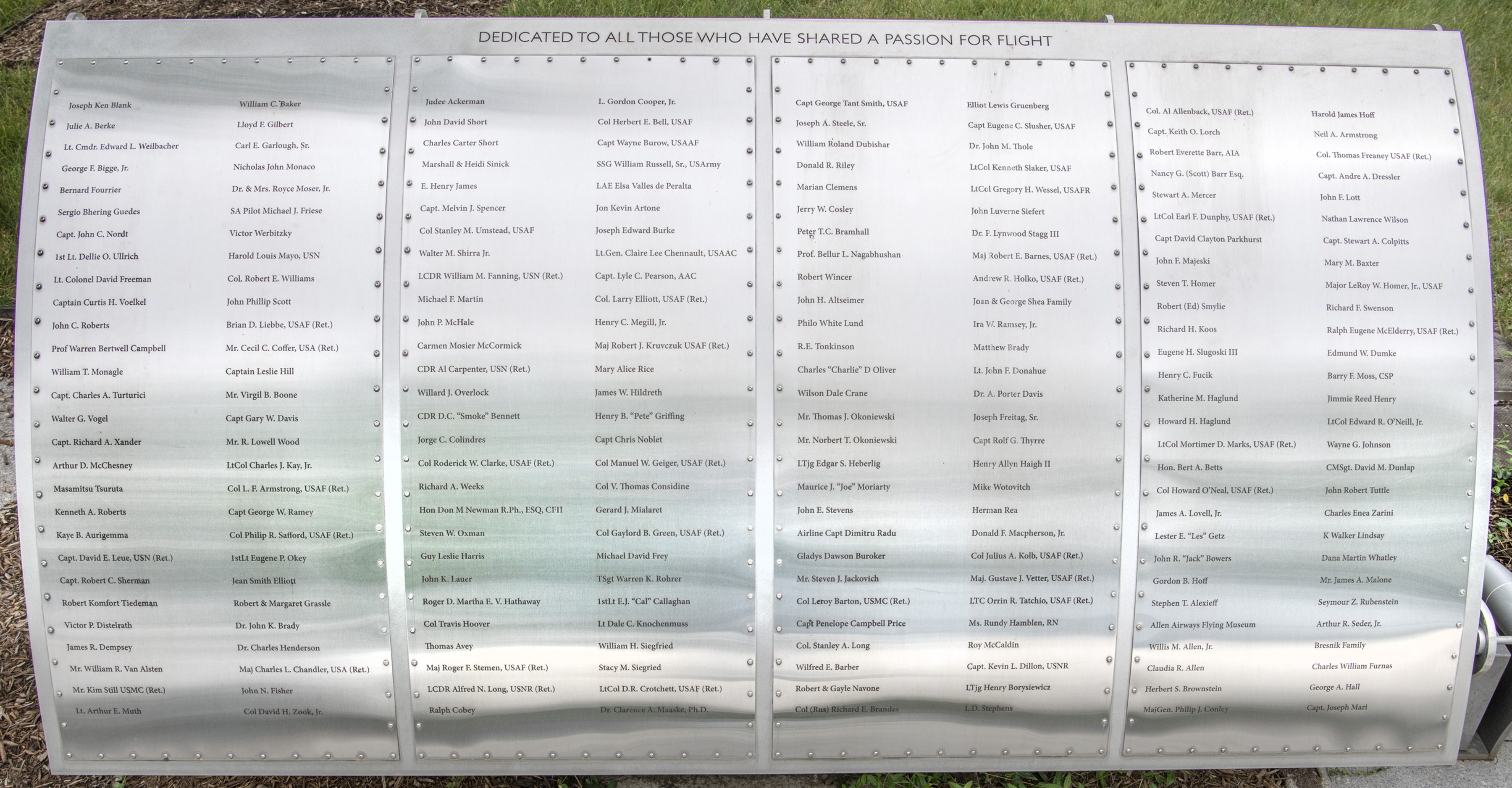
Foil: 23 Panel: 4 Column: 1 Line: 6
Wall of Honor Level: Air and Space Sponsor
Honored by:
Ms. Sandra D. Frost
Earl F. Dunphy's military career spanned three decades from June 1942, when he joined the Army Air Force as an Aviation Cadet, to November 1963, when he retired as a Lt Colonel. During World War II, Mr. Dunphy served primarily as a flight instructor, specializing in instrument flying procedures and techniques. He was promoted to First Lieutenant and became a B-29 aircraft commander.
Following WWII up until the Korean War, Mr. Dunphy served with several weather reconnaissance squadrons, flying reconnaissance missions over the Pacific Ocean, the polar ice cap, and from California to Alaska and Alaska to Japan. During that period, Mr. Dunphy held a number of positions (including, flight command, pilot instructor, instrument check pilot, and Wing Director of Flying Operations), obtained a Senior Command Pilot rating and a Top Secret security clearance, and was the commander for several weather reconnaissance squadrons with over twenty aircraft and 600 personnel. Also during this period, Mr. Dunphy flew regular polar flights from Fairbanks, Alaska along the Soviet Union perimeter to sample atmospheric nuclear particles resulting from nuclear blasts conducted in central Asia. Analysis of the nuclear particles enabled U.S. scientists to monitor the development of the Soviet Union's nuclear program.
During the Korean War, Mr. Dunphy flew rescue and daily nocturnal missions to gather intelligence for ensuing tactical operations. He flew high-risk troop evacuation missions during periods that U.S. troops were retreating down the peninsula from the advancing North Korean Army. Mr. Dunphy was awarded the Bronze Star Medal for these operations.
Following the Korean War, Mr. Dunphy served as the Assistant Chief, Operations Division for the Air Rescue Service, and as the Assistant Chief (and later Chief) for the Weather Reconnaissance Division. These two divisions operated approximately 100 aircraft each and conducted missions all over the world.
Mr. Dunphy next accepted a special assignment under Brigadier General T.S. Moorman as the B-50 Project Officer, in which he directed a multi-agency effort to update the Weather Reconnaissance Division. Under Mr. Dunphy's leadership, the Division's fleet of B-29s was replaced with a fleet of 74 specially equipped WB-50 aircraft. The new aircraft were the back-bone of nuclear air-sampling operation that enabled the United States to secretly monitor the nuclear developments of the Soviet Union.
In April 1955, Mr. Dunphy was promoted to Lt Colonel and awarded command of the 59th Weather Reconnaissance Squadron. The squadron had primary responsibility for hurricane weather reconnaissance in the south Atlantic. One of Mr. Dunphy's achievements during this tour was that, with a volunteer crew, he personally piloted the first nighttime flight into a fully developed hurricane that was threatening Miami to collect scientific weather data. Mr. Dunphy's command included six WB-50 aircraft, one C-54 aircraft and 250 personnel. Mr. Dunphy was awarded the USAF Commendation Medal for this tour of duty.
From June 1958 to July 1963, Mr. Dunphy held several supervisory positions in the 9th Weather Group, which controlled all of the Air Weather Service's flying operations. First, he served as Director of Reconnaissance, and under his leadership the 9th Weather Group received the coveted USAF Outstanding Unit Award. Second, Mr. Dunphy served as the Director of Operations for the 9th Weather Reconnaissance Group. During his tenure, jet aircraft were added to the fleet and all of the USAF's air-sampling operations were transferred to and consolidated under the 9th Weather Reconnaissance Group. Mr. Dunphy directed and controlled all flying activities of the Group.
Prior to his retirement in November 1963, Mr. Dunphy's final command was with the Alaskan Air Command. He served as the Commander of the Galena Air Force Base, which was the forward staging base for F-102 and F-106 jet fighter interceptor aircraft. Mr. Dunphy commanded this remote and self-sufficient base, which maintained combat ready fighter aircraft on five-minute alert status to intercept potential Soviet Cold War intruders.
Wall of Honor profiles are provided by the honoree or the donor who added their name to the Wall of Honor. The Museum cannot validate all facts contained in the profiles.
Foil: 23
